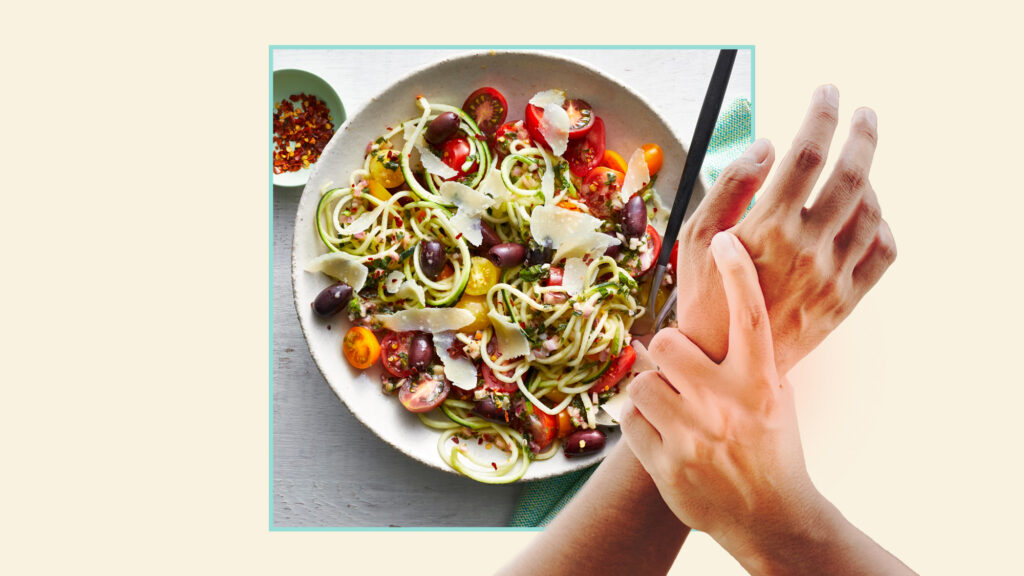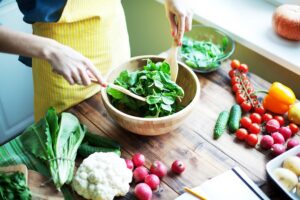
There are seemingly countless medications out there that can help manage pain. But the problem is, that they often come with unwanted side effects. That’s precisely why some people are turning to food as a way to reduce their chronic pain symptoms. While there are many different causes of pain, did you know that what you eat can play a role in reducing–or accelerating–your symptoms? This blog post discusses how eating right can help resolve chronic pain. We’ll also provide our top tips for shopping at your local farmers market and eating seasonally.
Pain and Your Diet: A Shocking Connection

A growing body of evidence suggests that what we eat can influence our pain levels. For example, studies have shown that people who consume a diet high in processed foods and sugar are more likely to suffer from chronic pain than those who eat a healthy diet. This is because inflammation plays a role in both the development and the exacerbation of pain. And processed foods and sugar contribute to inflammation in the body.
Your Pain-Relieving Grocery List

We’re helping you prepare for the market with a list of can’t-miss foods that will help you reduce the effects of chronic pain on your life. Get your pencil and pad ready; these yummy foods should top your list.
Omega-three Fatty Acids
A growing body of evidence suggests certain foods and spices can help with pain relief. For example, omega-three fatty acids (one of the absolute best supplements for your eyes) are known to have anti-inflammatory properties. These types of fats are found in fish, nuts, and seeds. Research has shown that people who eat a diet rich in omega-three fatty acids are less likely to suffer from chronic pain. But don’t confuse omega-three fatty acids with omega-six fatty acids–which actually flare up inflammation if not consumed in the right balance.
Probiotics
Probiotics are live bacteria found in fermented foods at your farmer’s market like yogurt, sauerkraut, and kimchi. Probiotics have been shown to balance the microbiome and help reduce inflammation in the gut. A 2018 study showed that people who took probiotic supplements had less pain and inflammation associated with arthritis.
Ginger
Another food that helps with pain relief is ginger. Ginger contains a compound called gingerol, which has anti-inflammatory and pain-relieving effects. In one study, ginger was found to have potential therapeutic benefits in reducing the symptoms of the autoimmune disease rheumatoid arthritis.
Blueberries
Blueberries have long been prized for their nutritional value (they’re high in vitamin c and manganese), and recent research has shown that they may also help stop chronic pain. Blueberries contain a compound called pterostilbene, similar to resveratrol, the compound found in red wine that is believed to have health benefits. Pterostilbene is thought to have anti-inflammatory properties, and studies have shown that it can help reduce pain and swelling in rats. In addition, pterostilbene produces natural opioids, which are the body’s pain-killing molecules. While more research is needed to confirm these effects in humans, there is evidence that blueberries may be a helpful natural remedy for chronic pain.
Tart Cherries
Tart cherries are a safe and effective way to reduce chronic pain. In fact, some researchers tout them as having “the highest anti-inflammatory content of any food Studies have shown that tart cherries help reduce inflammation, a major contributor to chronic pain. Additionally, tart cherries contain antioxidants that help to protect the body from damage caused by free radicals. These nutrients also help to reduce inflammation and pain. Best of all, tart cherries are widely available at many farmer’s markets and can be easily incorporated into your diet.
Chili Peppers
Chili peppers have long been used as a natural remedy for pain relief. And there may be some science to back up their use. Capsaicin, the compound that gives chili peppers their heat, has been shown to block the release of pain-related substances in the body. This can help to relieve both acute and chronic pain.
Chili peppers can be consumed in many different ways, including fresh, dried, or as an extract. They can also be applied topically as a cream or ointment. If you’re considering using chili peppers for pain relief, you must speak to your healthcare provider first. Capsaicin can cause irritation and burning, so caution is important when applying it to the skin.
Using Food for Chronic Pain: Our Top Tips

If you’re interested in using food to help with your chronic pain, you can do a few things. First, focus on eating a healthy, balanced diet. This means eating plenty of fruits, vegetables, whole grains, and lean protein. In addition to reducing pain, eating a healthy diet can improve your overall health and well-being.
Second, consider shopping at your local farmers market for in-season produce. Not only is this produce fresher and tastier, but it’s also more affordable. When you eat seasonally, you’re getting the most nutrient-dense food possible. This is important because chronic pain and nutrient deficiencies are linked.
Finally, make sure to stay hydrated. Drinking plenty of water is vital for overall health, but it’s especially important when dealing with chronic pain. When you’re adequately hydrated, your body is better able to repair tissue and reduce inflammation.
And did you know that proper hydration is the key to successful microcurrent protocols? If drinking water is something you cannot stay on top of, consider integrating some homemade electrolyte drinks into your routine!
7 Tips for Shopping at the Farmer’s Market

Your local farmers market is a great place to get fresh, local produce for a fantastic price. However, there are a few things you should keep in mind when shopping at a farmers market.
- Get there early. The best selection will be available at the beginning of the market before items start to sell out.
- Bring cash. Some farmers’ markets do not accept credit or debit cards, so it’s important to come prepared with cash.
- Bring your own bags. Most markets will provide plastic bags, but it’s always good to bring your own reusable bags to reduce waste.
- Come prepared. It can be helpful to make a list of desired items before heading to the market so you don’t get overwhelmed by all the choices.
- Be flexible. While it’s good to have an idea of what you want, be open to trying new things and taking advantage of whatever is in season.
- Support your local farmers. Farmers’ markets are a great way to connect with and support local farmers and producers. Think of it as a community-building opportunity.
- Have fun! Shopping at the farmer’s market should be a pleasant experience, so take your time and enjoy exploring all available options. This is an excellent opportunity to teach the kids or grandkids about where their food comes from and the importance of eating healthy.
Whether you pick up some versatile zucchini, hearty pumpkins, or sweet blueberries, there’s always a way to make your farmer’s market haul a step towards pain resolution. If you’d like assistance designing a pain-fighting diet that works for YOUR unique body, consider signing up for an Hache Protocol™ Private Membership today.
Sources cited:
Nutrition and Chronic Pain – International Association for the Study of Pain (IASP) (iasp-pain.org)
Omega-3 fatty acids for neuropathic pain: case series – PubMed (nih.gov)
Probiotics in digestive, emotional, and pain-related disorders – PubMed (nih.gov)
Zingiber officinale: A Potential Plant against Rheumatoid Arthritis – PMC (nih.gov)
Berries: anti-inflammatory effects in humans – PubMed (nih.gov)
Insights on Nutrients as Analgesics in Chronic Pain – PubMed (nih.gov)





